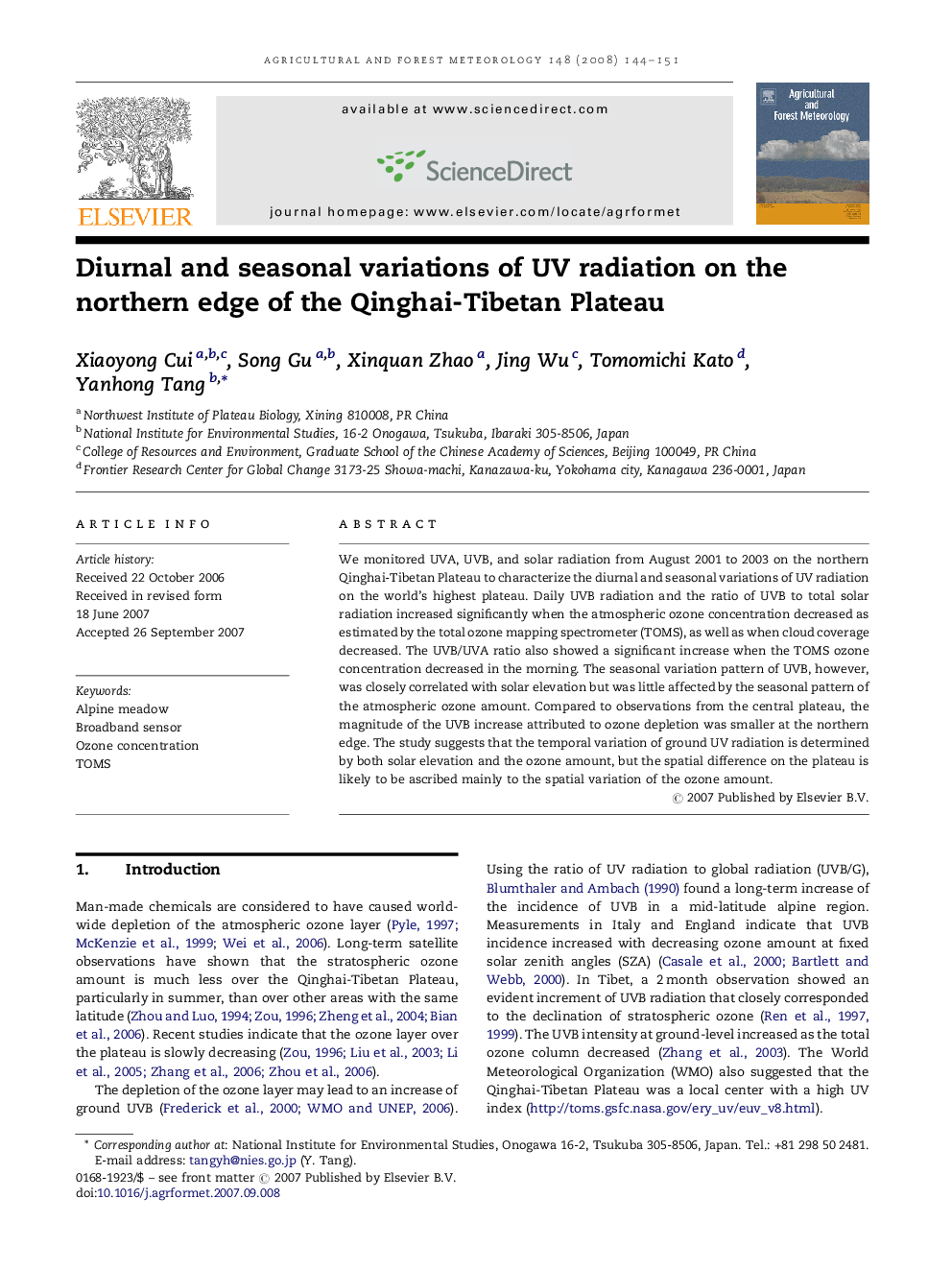| Article ID | Journal | Published Year | Pages | File Type |
|---|---|---|---|---|
| 82692 | Agricultural and Forest Meteorology | 2008 | 8 Pages |
We monitored UVA, UVB, and solar radiation from August 2001 to 2003 on the northern Qinghai-Tibetan Plateau to characterize the diurnal and seasonal variations of UV radiation on the world's highest plateau. Daily UVB radiation and the ratio of UVB to total solar radiation increased significantly when the atmospheric ozone concentration decreased as estimated by the total ozone mapping spectrometer (TOMS), as well as when cloud coverage decreased. The UVB/UVA ratio also showed a significant increase when the TOMS ozone concentration decreased in the morning. The seasonal variation pattern of UVB, however, was closely correlated with solar elevation but was little affected by the seasonal pattern of the atmospheric ozone amount. Compared to observations from the central plateau, the magnitude of the UVB increase attributed to ozone depletion was smaller at the northern edge. The study suggests that the temporal variation of ground UV radiation is determined by both solar elevation and the ozone amount, but the spatial difference on the plateau is likely to be ascribed mainly to the spatial variation of the ozone amount.
